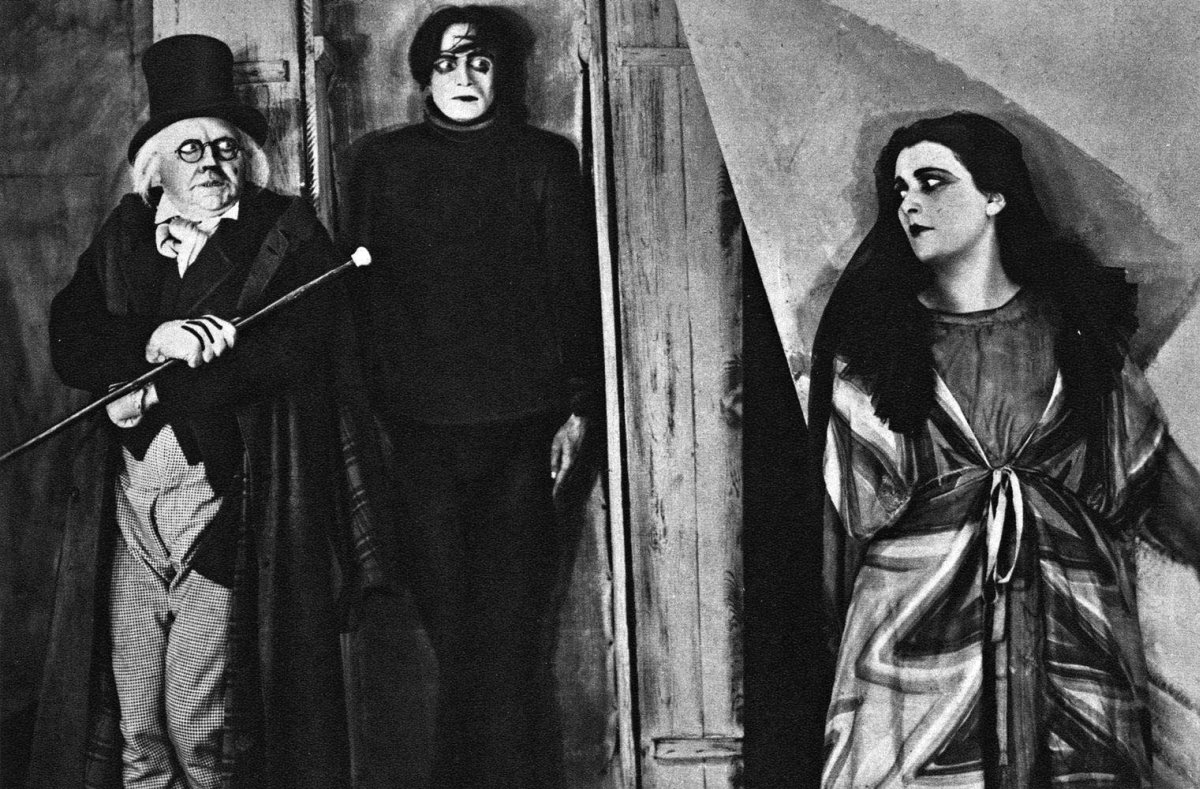German Expressionist Films (1919-1931)
German Expressionism is the fundamental basics to most horror films till this day. Expressionism is the opposite of Impressionism (surface reality). Expressionism is viewing the world based upon emotions or different perceptions.
Expressionism used a particular style which involves artificial set worlds (often geometric), detailed costumes, unnatural/extreme makeup. The cinematography really emphasizes boldly dramatic contrasts between dark shadows and bright highlights.
 |
| 'The Cabinet of Dr Caligari' image of actors on set. Image from YouTube |
The films with expressionism often have distorted and exaggerated settings; made up of unnatural spaces; the use of skewed angles and nonparallel lines; a moving camera,;strange costumes, hairstyles and makeup; also having very stylized acting.
 |
| 'The Cabinet of Dr Caligari' street view in the film. Image from YouTube |
The films gene are horror and often show people experiencing extreme psychological states that reflect the movies extreme settings. The main key themes used are madness, criminality, and fracturing of identities.
The early German Expressionist films were based upon their view and feelings of how WWI came to an end and the punishment Germany had received. The government was seeking to change their image so they supported the film industry and created the UFA (Universe-Film AG).
This style of film is still used and is relevant to this present date, being used in the horror gene. Lot's of the techniques used are also used in many different styles of film, like the extreme angles in the background.
No comments:
Post a Comment